


RENÉ DESCARTES 1596 -
Acknowledgements
Descartes: detail of portrait after the Dutch painter Frans Hals, c1649-
Including:
The Marquise de
Rambouillet and
Nicolas Malebranche

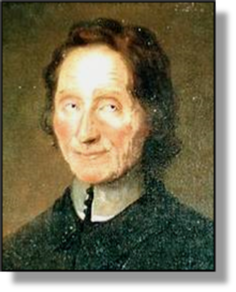 xxxxxThe French philosopher and theologian Nicolas Malebranche (1638-
xxxxxThe French philosopher and theologian Nicolas Malebranche (1638-
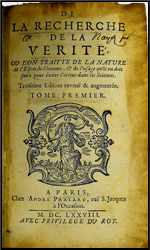
xxxxxMalebranche published a number of works on theology, metaphysics and ethics, and, as a scientist, he also made contributions to the study of optics, the nature of light and colour, and the laws of motion. In his major work, The Search for Truth, written in 1674 and 1675, Malebranche covered a wide variety of topics, concentrating mainly upon the principal sources of human error and the means of avoiding these errors in order to find the truth. And contained therein is his famous doctrine of the Vision in God, the theory that ideas that function in human knowledge and perception can only exist, in fact, in the divine intellect. We know and perceive 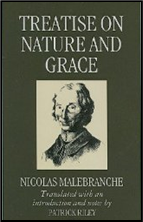 ideas, therefore, through the working of God.
ideas, therefore, through the working of God.
xxxxxAs we shall see, his theories were not generally popular -
xxxxxThe French philosopher and theologian Nicolas Malebranche (1638-
xxxxxThe French mathematician, philosopher and scientist René Descartes was one of the world’s greatest thinkers. In his Discourse on Method of 1637 he set out his basic theory -
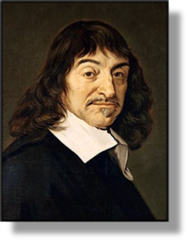 xxxxxThe French mathematician, philosopher and scientist René Descartes was one of the most brilliant and influential thinkers in human history. Writing at the dawn of the scientific revolution, he is sometimes referred to as the father of modern philosophy. He was born in La Haye, south of Tours, and attended the Jesuit school of La Flèche in Anjou. After studying law at the University of Poitiers, graduating in 1616, he served in both the Dutch and Bavarian armies, but saw no action. He then resided for some years in Italy and France, but in 1628 settled in the more tolerant atmosphere of the Netherlands to continue his studies, determined to construct a system of knowledge that would encompass all human understanding. He worked in various cities over the next 20 years, including Amsterdam, Utrecht and Leiden. In 1649 he travelled to Stockholm to instruct Queen Christina of Sweden in philosophy and it was there that, falling victim to the severity of the northern winter, he died of pneumonia in February the following year.
xxxxxThe French mathematician, philosopher and scientist René Descartes was one of the most brilliant and influential thinkers in human history. Writing at the dawn of the scientific revolution, he is sometimes referred to as the father of modern philosophy. He was born in La Haye, south of Tours, and attended the Jesuit school of La Flèche in Anjou. After studying law at the University of Poitiers, graduating in 1616, he served in both the Dutch and Bavarian armies, but saw no action. He then resided for some years in Italy and France, but in 1628 settled in the more tolerant atmosphere of the Netherlands to continue his studies, determined to construct a system of knowledge that would encompass all human understanding. He worked in various cities over the next 20 years, including Amsterdam, Utrecht and Leiden. In 1649 he travelled to Stockholm to instruct Queen Christina of Sweden in philosophy and it was there that, falling victim to the severity of the northern winter, he died of pneumonia in February the following year.
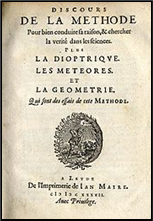
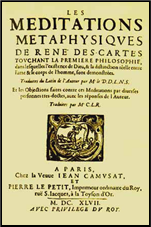 xxxxxHis first major work was his Philosophical Essays. Published in 1637, this contained papers on geometry, optics and meteors, and his Discourse on Method, an exposé of his philosophical ideas. There followed his Meditations on the First Philosophy of 1641, and his Principles of Philosophy three years later. He also wrote a number of treaties or specialised books on geometry, astronomy and animal behaviour, and his interest in optics, begun during his stay in France in the 1620s, established this subject as a recognised science. It was during his study of optics that he was the first to publish the fundamental law of reflection which states that the angle of incidence is equal to the angle of reflection. It is not known whether he arrived at this law independently, or knew of the law devised by the Dutch physicist Willebrord Snell in 1621. Be that as it may, such research led him to examine the anatomy of the eye and the mechanics of vision.
xxxxxHis first major work was his Philosophical Essays. Published in 1637, this contained papers on geometry, optics and meteors, and his Discourse on Method, an exposé of his philosophical ideas. There followed his Meditations on the First Philosophy of 1641, and his Principles of Philosophy three years later. He also wrote a number of treaties or specialised books on geometry, astronomy and animal behaviour, and his interest in optics, begun during his stay in France in the 1620s, established this subject as a recognised science. It was during his study of optics that he was the first to publish the fundamental law of reflection which states that the angle of incidence is equal to the angle of reflection. It is not known whether he arrived at this law independently, or knew of the law devised by the Dutch physicist Willebrord Snell in 1621. Be that as it may, such research led him to examine the anatomy of the eye and the mechanics of vision.
xxxxxIn his study of philosophy, he applied methods from both science and mathematics in his search for certainty. He argued that certain universal truths could be discovered purely by deductive reasoning. His own philosophy, sometimes called "Cartesianism", was based on the premise known as cogito ergo sum ("I think, therefore I am"). As one could not fully rely on one's senses because they were subjective, then everything had to be doubted, and this doubting thus became the one certainty. It followed that to doubt was to think, and the process of thinking proved that one existed. From this certain fact or axiom, he deduced the existence of God, and the creation by Him of two fundamentals, one of the mind and one of body. These were two entirely distinct entities, a “dualism” wherein the mind was non-
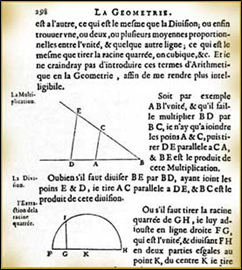
xxxxxIn the field of mathematics, his greatest contribution was his work La Géométrie, published in 1637. In this treatise he was the first to forge links between the disciplines of geometry and algebra, showing how algebra could be used to obtain an analysis of geometric problems (known as Analytic Geometry). It followed that he was the first to make a distinction between those "geometric" curves which can be expressed as an equation, and those "mechanical" curves, which cannot. Among other advances, he invented the method of indices to express the powers of numbers, and formulated the "Descartes' rule of signs" in order to find the number of "true" (positive) and "false" (negative) roots of any algebraic equation.
xxxxxIn science he claimed that the material universe could be explained in terms of mathematical physics. The human body was a "clockwork machine", but the mind or soul was superior, unique and capable of surviving the death of the body. Thus, in what came to be known as "Cartesian dualism", there was a spatial substance, known as matter, and a thinking substance, known as the mind or thought. In his mechanical interpretation of the physical world, however, his explanations sometimes missed the mark. At first, for example, he tended to accept the Copernican theory of the universe, and wrote a book, The World, in support of it, but when the theory was pronounced heretical by the Inquisition in 1633 he suppressed publication of his work and sought another explanation. He eventually came up with a none-
xxxxxBut the extreme rationalism adopted by Descartes was not without its critics. As we shall see (1656 CW), his contemporary, the French philosopher Blaise Pascal, was one of the first to reject the deductive reasoning of his contemporary in his major work Thoughts, and others were to follow. And his dualism, the "mind-
xxxxxIncidentally, it would seem that Queen Christina had a part to play in the untimely death of Descartes. Though fully aware that the philosopher was not an early riser, she insisted that he got up at five o'clock in the morning to give her lessons on philosophy. Furthermore, she kept him busy. He was ordered to write a ballet in verse -
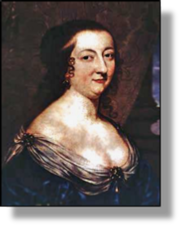
xxxxxWhen in Paris, Descartes, together with other intellectuals of this period, was a visitor to the literary salon of the Marquise de Rambouillet (1588-
C1-


